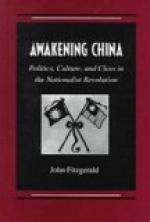“With caravans for want of towns.”
Sooth to say, there are no towns, except Urga, a shrine for pilgrimage, the residence of a living Buddha, and Kiachta and Kalgan, terminal points of the caravan route already referred to.
Kiachta is a double town—one-half of it on each side of the Russo-Chinese boundary—presenting in striking contrast the magnificence of a Russian city and the poverty and filth of a Tartar encampment. The whole country is called in Chinese “the land of grass.” Its inhabitants have sheepfolds and cattle ranches, but neither fields nor houses, unless tents and temporary huts may be so designated. To this day, nomadic in their habits, they migrate from place to place with their flocks and herds as the exigencies of water and pasturage may require.
Lines of demarcation exist for large tracts belonging to a tribe, but no minor divisions such as individual holdings. The members of a clan all enjoy their grazing range in common, and hold themselves ready to fight for the rights of their chieftain. Bloody feuds lasting for generations, such as would rival those of [Page 59] the Scottish clans, are not of infrequent occurrence. Their Manchu overlord treats these tribal conflicts with sublime indifference, as he does the village wars in China.
The Mongolian chiefs, or “princes” as they are called, are forty-eight in number. The “forty-eight princes” is a phrase as familiar to the Chinese ear as the “eighteen provinces” is to ours. Like the Manchus they are arranged in groups under eight banners. Some of them took part in the conquest, but the Manchus are too suspicious to permit them to do garrison duty in the Middle Kingdom, lest the memories of Kublai Khan and his glory should be awakened. They are, however, held liable to military service. Seng Ko Lin Sin ("Sam Collinson” as the British dubbed him), a Lama prince, headed the northern armies against the Tai-ping rebels and afterwards suffered defeat at the hands of the British and French before the gates of Peking.
In the winter the Mongol princes come with their clansmen to revel in the delights of Cambalu, the city of the great Khan, as they have continued to call Peking ever since the days of Kublai, whose magnificence has been celebrated by Marco Polo. Their camping-ground is the Mongolian Square which is crowded with tabernacles built of bamboo and covered with felt. In a sort of bazaar may be seen pyramids of butter and cheese, two commodities that are abominations to the Chinese of the south, but are much appreciated by Chinese in Peking as well as by the Manchus. One may see also mountains of venison perfectly fresh; the frozen carcasses of “yellow sheep” [Page 60] (really not sheep, but antelopes); then come wild boars in profusion, along with badgers, hares, and troops of live dogs—the latter only needing to be wild to make them edible. This will give some faint idea of Mongolia’s contribution to the luxuries of the metropolis. Devout Buddhist as he is, the average Mongol deems abstinence from animal food a degree of sanctity unattainable by him.




